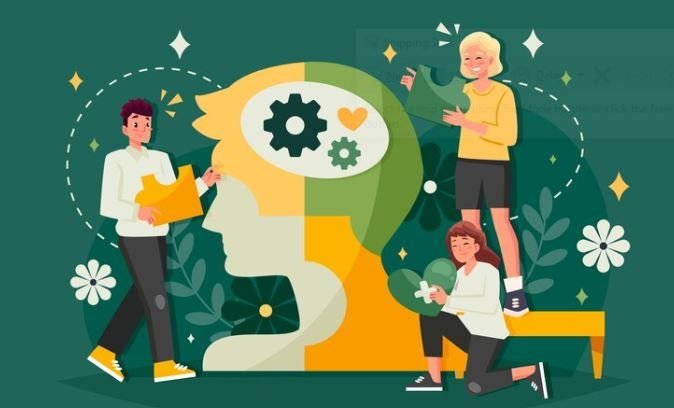Indian Educational System is one giant thing in common between millions upon millions of children living scattered across the country. The Government School, as it is called in India, fosters education for children in the basic categories such as reading writing math, and science. However, it does have its speed bumps that may make learning difficult for some students.
we will take a look at 5 complex problems in the Indian Education System and figure out why they are crucial.
The Pressure of Exams
One of the major problems in the Indian Education System is the burden of exams. They have to remember a lot of stuff and sometimes study 8 -10 hours straight in the day. This can make students grow tired and upset, and it takes the joy from learning.
Some so many students work hard just because they want to have a good grade and not disappoint their parents. But sometimes the stress can be too overwhelming, It can even lead students to become so afraid of failure that it prevents them from trying anything new or further exploring their passions.
More Understanding Needed
It is one of the biggest issues with Indian education which does not emphasize learning facts but rather, teaches memorization. In other cases, students are asked to memorize massive amounts of textbook information and regurgitate it for exams. This learning method is called rote learning.
Although it might help students to score well, but does not always support the understanding of what they are learning and how to apply it in the future.
For instance, a student who memorizes the formula for finding the area of the square but has no clue how this is derived will not be able to work out problems that they have never come across before. And when the child can grasp a concept and then apply it in different situations, that complete understanding translates into True Learning.
Lack of Practical Learning
Theoretical learning is there but lack of practical in most Indian schools. What it is learning by doing, as in performing experiments for science or creating projects in class. It also provides a practical side of learning, which helps students comprehend things in real life and experience them as well.
At the same time, many schools in India are affiliated with boards where theoretical learning prevails i.e. rote memorization from books and less practical hands-on knowledge. This can make learning boring as well and will prevent kids from acquiring the problem-solving skills, and creativity they need.
Inequality in Education
Since we are talking about India, Almost every student does not have a proper set of opportunities. Others go to private schools, where they have some amazing teachers and books and very impressive facilities. Others attend government schools that are often under-resourced and provide lower-quality education. Such disparities in education mean that not all children receive the same opportunities to develop and prosper.
In rural areas, it is even worse. There is no drinking water, electricity, and classroom arrangements in many of our rural schools. Educators in these regions are less likely to be professionally qualified and work may also take place under poor conditions. Consequently, you have students in rural schools who will not learn as much which affects their future opportunities.
Overcrowded Classrooms
Overcrowding of classrooms is another issue in the Indian education system. There are too many students in a class, especially those in government schools. Which makes it hard for the teachers to attend to each student and address their issues on time.
A noisy and distracting classroom is also the result of overcrowding on top of just plain too many kids. It can also be hard for students to focus on their studies and teachers find it difficult to control the class.
Limited Teacher Training
The teacher has a prominent place in the education of schools. But India is a place, where teaching as a profession does not much attention or teaching that how to teach, no? The rest of this works in tandem and its role is part of making teachers fit for learning, too many good teacher training programs do not help them learn new ways how to learn best practices with fun.
If they do not have the proper training, teachers might not fully understand how to attend to the learning style of each student or even effectively use new technology in classroom settings. This can prohibit them from having to interact with students and make learning fun for the children.
A Multi-Language Puzzle
In a multilingual country like India, this always could be problematic. Students in some areas speak a different language at home than the one used to teach. This can impact their ability to learn and in general, do well in school.
So, for example, if a child speaks Tamil at home and has to learn Hindi outside their house, they might not understand anything. When you know that some of your students speak little to no English, the language barrier makes it difficult not only for teachers and these students to communicate with each other but also they will struggle in a way to complete themselves.

Limited Tech in the Classroom
Technology in Education Gaining Importance with Each Passing Day After all, computers, the internet, and digital tools are ideal for making learning interactive and entertaining! They also teach students how to think, learn new skills, and many other criteria they appreciate for the future.
Still, a lot of schools in India do not have much technology or internet connectivity. Thus, students lose the opportunity for meaningful learning. In rural areas, electricity may be too rare to light computers, let alone enable students with modern technology.
Outdated Curriculum
The curriculum in most Indian schools is very backward and outdated which never meets the requirements of this modern-day world. For example, the subjects taught in school might not even cover information that gives us any practical utility such as coding or critical thinking apart from no mention of topical teaching around environmental education. This can result in students who may not be ready for the real world.
A 90s curriculum reveals students to training that is dry, stimulating, and often irrelevant beyond high school. An education system needs to restructure its courses at regular intervals so that the subject or skills of today, will be needed tomorrow.
The Importance of Creativity
This article emphasizes the importance of creativity in learning and how many Indian schools happen to pay no heed to it. The students are almost always told what the correct answers or exact words an examiner might want to hear.
Art, music, and creative storytelling are tools that foster the imagination of students for self-expression. It also helps students understand things more playfully. It enables students to develop independence, confidence, and critical thinking skills which are essential in problem-solving.
Parents & Community Role
Lastly, parents and the community also contribute to a steady formula for sustaining children’s teaching. But in parts of India, such as slums or rural areas parents may simply not have the time, money, and information to take detailed interest in every aspect of their child’s education. It also affects how well a child does in school.
Parent and community involvement in education can make a world of difference. They can help in assisting students whenever they need, motivating them to follow their interests, and providing a better learning environment at home.

What Can Be Done?
It is very unnecessary to mention how important this is for the future of those millions of kids in India. There are a lot of ways we can improve and, in this age of austerity always also innovate — work to make education both better AND more effective..
The first suggestion is through the mode to relieve stress of exams and not only focus on rote learning but also strive for understanding. Various teaching methods are employed in classes to promote experiential learning and creativity by teachers.
Secondly, making sure that students have access to high-quality education—regardless of where they live—is critical. This includes upgrading government schools and rural institutions and imparting better teacher training for the same.
Updating the curriculum: Updating and changing the subjects provide new skills that can enhance student-view perspective on the world. It also needs the induction of more technology in schools to make learning interactive and exciting.
Lastly, fostering increased parental and community involvement in education can promote the development of a culture of learning around students. Students fare better when everyone collaborates.
Conclusion
The Indian Education System holds the key to the future of our country but it is not solving its purpose. So instead of complaining, let´s help find solutions to these problems and make education better. The reality is every small step right from reducing the pressure of the exams to changing our education system and its syllabus, and not letting a child suffer because he or she does not belong to a good school can go a long way in supporting a large number of students across India.


